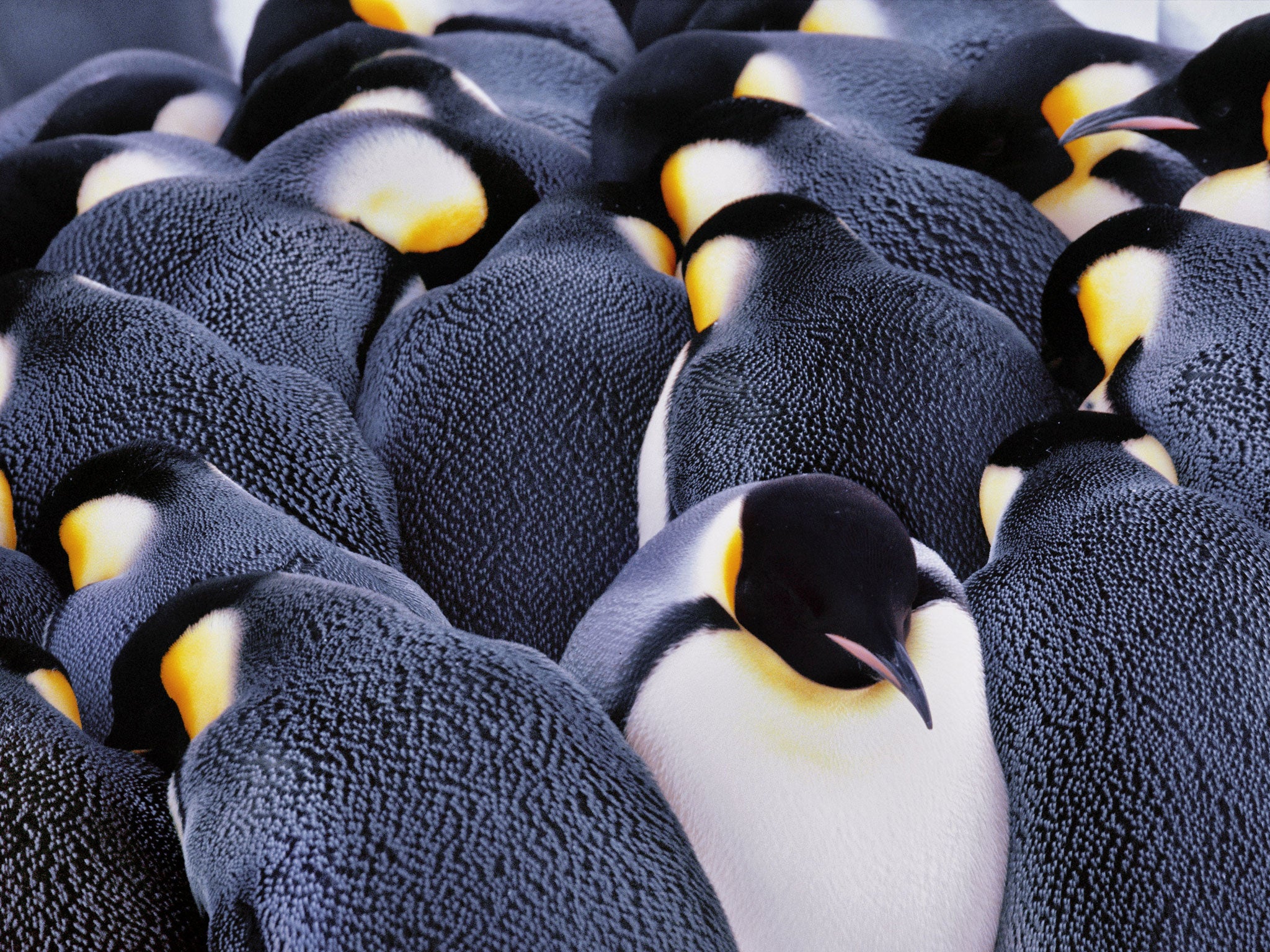Wave if you're cold! The amazing patterns that keep huddling emperor penguins protected
Movements are similar to flowing traffic on a congested motorway - but can work in any direction

The scrum formed by male emperor penguins to protect themselves against the harsh Antarctic weather is maintained by the same system of little wave-like movements that keeps traffic flowing on a heavily congested motorway, scientists have found.
Each penguin that joins a huddle snuggles up closely to his companions but time-lapse photography has shown that the entire colony experiences small waves of movement triggered when one penguin moves more than 2cm away from his neighbour.
Once one penguin moves, then so do the neighbours he leaves behind, triggering a wave of movement that flows through the group like a "travelling wave". The scientists found that this constant micro-jostling for position actually maintains the close unity of the group, giving it the best protection against the bitterly cold winds.
Unlike a traffic jam, however, the waves of movement can be triggered by any individual penguin within the group and can propagate in any direction as soon as the "threshold distance" of 2cm is broken. Scientists found that 2cm is twice the thickness of a penguin's uncompressed feather coat and that emperors carefully snuggle up to each other so that they don't compress each other's feathers - giving them the possible insulation.
"We were really surprised that a travelling wave can be triggered by any penguin in a huddle, rather than penguins on the outside trying to push in," said Daniel Zitterbart from the Alfred Wegener Institute in Bremmerhaven, who carried out the study published in the New Journal of Physics.
"We also found it amazing how two waves, if triggered shortly after each other, merged instead of passing one another, making sure the huddle remains compact," Dr Zitterbart said.
Male emperor penguins form dense huddles of thousands of individuals during the Antarctic winter, when temperatures dip to as low as -50C and windspeeds reach 200 km/hr. They have to maintain their body temperatures to survive and to incubate the eggs that they are charged with looking after while their female mates return to the sea to feed.
Join our commenting forum
Join thought-provoking conversations, follow other Independent readers and see their replies
Comments